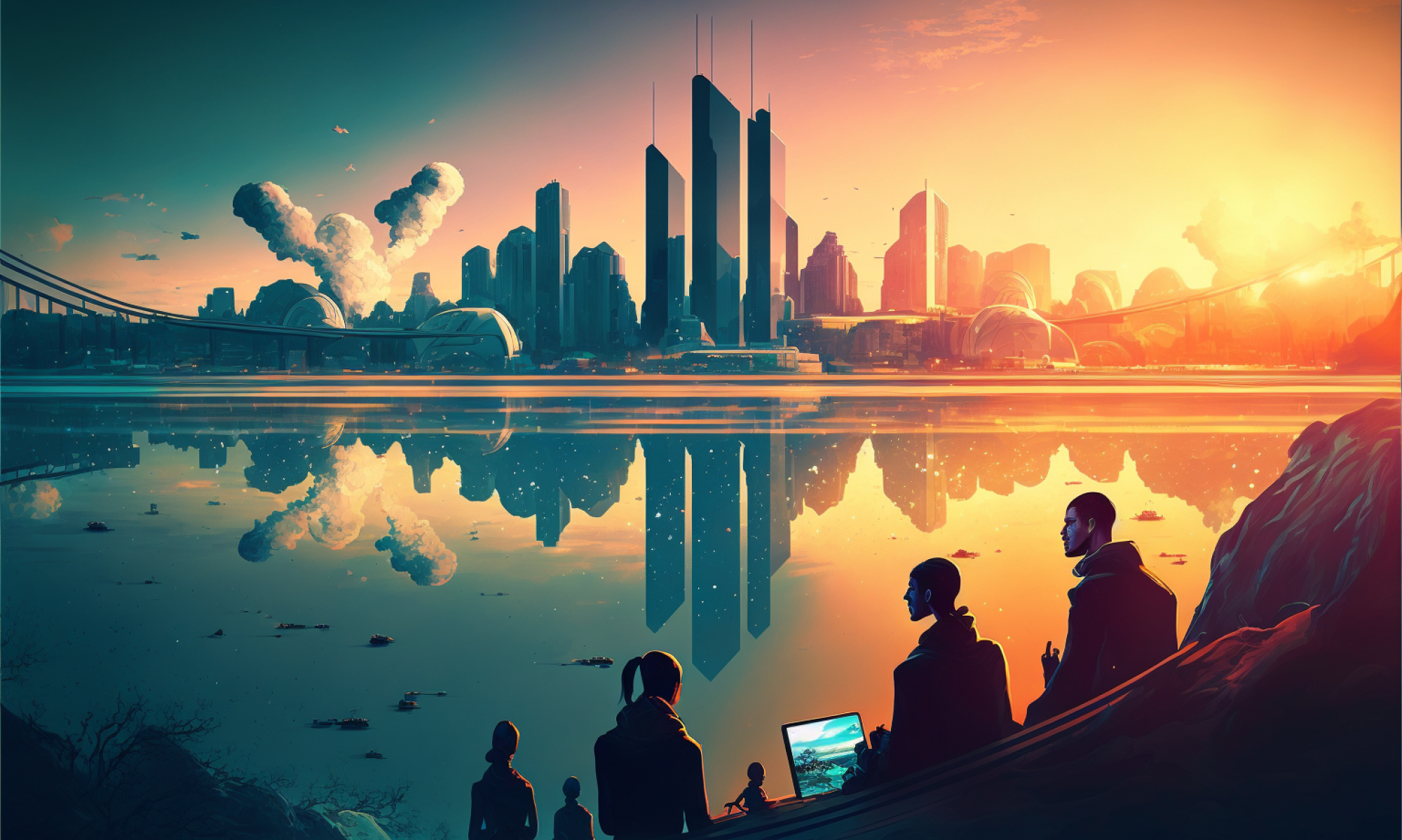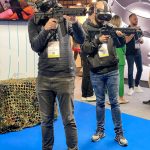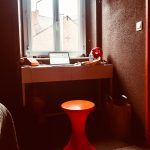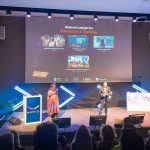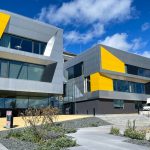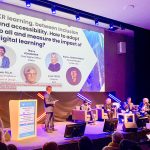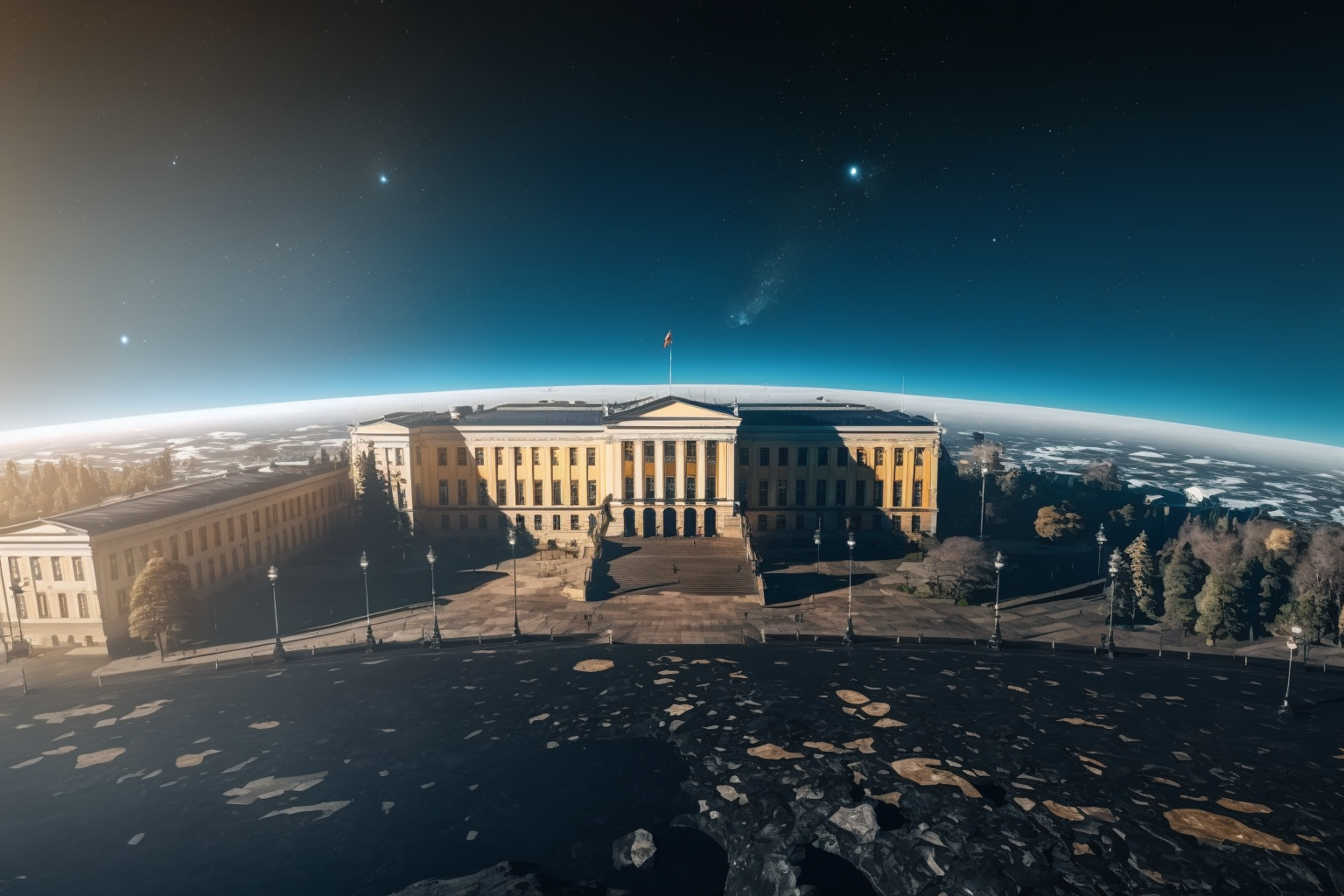My Journey Through Laval Virtual: The Quest for Immersion in the World of Virtual Reality
To give you some context you will find a brief summary about myself at the end of this post.
As an enthusiast of the concept of virtual realities, I was eager to attend Laval Virtual, the premier event showcasing the latest advancements in VR, augmented reality (AR), and mixed reality (MR) in short XR in as someone put it humbly the capital of VR! I couldn’t wait to dive into the world of cutting-edge technology, engaging discussions, and artistic creations. Throughout the event, I found myself constantly questioning: “What truly defines immersive experiences in XR?”
This is my personal journey to and through Laval Virtual as I explored innovative brands, participated in thought-provoking discussions, and found inspiration in the arts, all in the quest for immersion. But before I let you read the text itself I offer you the possibility to immersive yourself in a few 360° photos from various stages of my trip.
You can freely navigate with your mouse within the 360° image, there is even a hotspot you can click on and move on to the next image.
Note: While writing this on Friday 14 April, Laval Virtual is still on-going, but unfortunately I have to catch a train and then plane to make it home still today. Greetings from Paris Charles de Gaulle airport.
Discoveries
During my first day on Wednesday 12 April, I was thrilled to explore the innovative brands and technologies being showcased. As a newish VR enthusiast, I was particularly impressed by Movella‘s Xsense, found the approach L.A.P.S. is taking interesting and thought Olfy had taken the next logic step in bringing one more of our senses to the XR table, very refreshing. Xsense’s groundbreaking work in motion capture, live avatar performance solutions, and sensory integration expanded, seeing it live, my understanding of what’s possible in VR and AR experiences.
L.A.P.S.’s solutions on the other hand enable real-time facial expression tracking, which allows avatars to mirror the movements and emotions of the performers in real-time. Finally Olfy is a virtual reality system that simulates smells to create a more immersive experience. In their own words: The sense of smell allows virtual reality experiences to be more engaging and immersive. Our goal is to enhance the emotions and effectiveness of virtual experiences by allowing you to experience them 100% (Olfy).
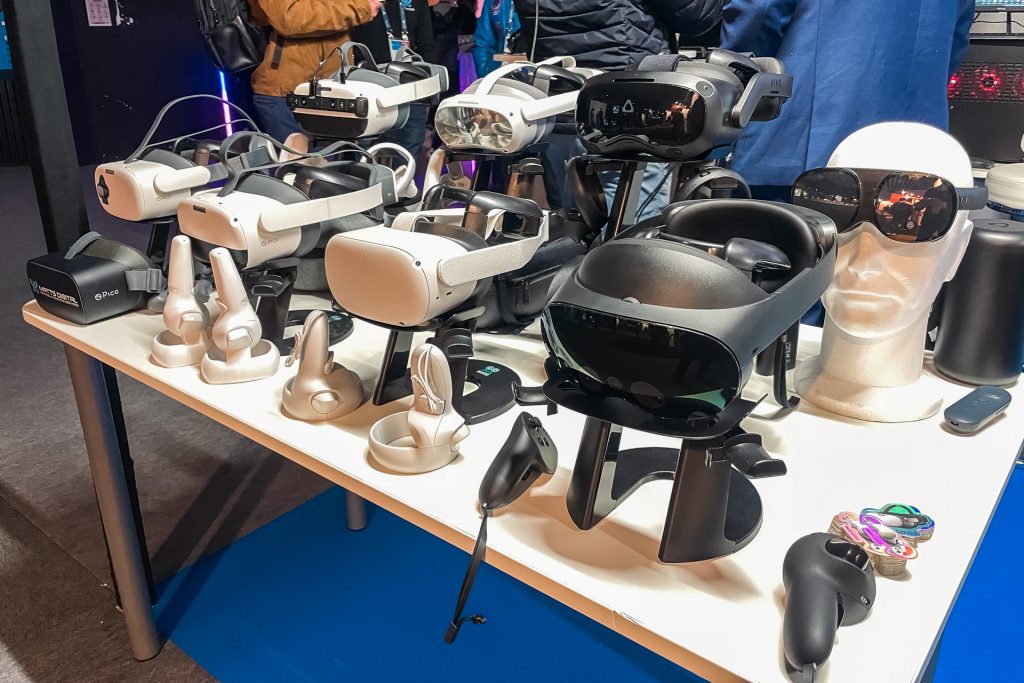
Thought-Provoking Conversations
As I attended the various discussions and keynotes, the Immersive Digital Learning topic stood out as a highlight for me, particularly the engaging panel discussion featuring Anaïs Pierre, Bogdan Constantinescu, Jayesh Pillai, and Thierry Koscielniak. Anaïs passionately emphasised that technology serves as a tool, and we must prioritise learning goals before seeking the appropriate technological solution. The use of tech tools must be purposeful and meaningful.
This is exactly how I feel about the use of technology in general. Content and (in my case usually) learning goals first, otherwise your course or product will not find its full potential.

I listened to Kent Bye’s fast-paced talk on the topic of XR moral dilemmas and ethical considerations. He discussed several crucial concerns that we should all be pondering, including the digital divide in access to XR technology, threats to privacy (e.g., biometric data), apparently there is no legislation on this and similar issues.
Furthermore a new concept I hadn’t heard before: mental privacy which is part of a proposed set of rights called the Neuro rights. Mental privacy refers to the protection of an individual’s thoughts, emotions, and mental processes from unauthorised storing and access, particularly in the context of novel technologies that can potentially monitor or manipulate these aspects of the human experience. This really jump-started my brain and I am still processing all the possible implications and reflecting on the ethical and practical considerations of using XR technologies in education and beyond.
During another panel discussion, I was introduced to the concept of eco-design, which involves reducing the energy footprint of eg. VR headsets. It became clear that as VR technology evolves, we must be aware of and address the energy-intensive nature of these devices to create a more sustainable and ethical future. By incorporating eco-design principles, we can minimise the environmental impact of VR and ensure a more responsible approach to technology.
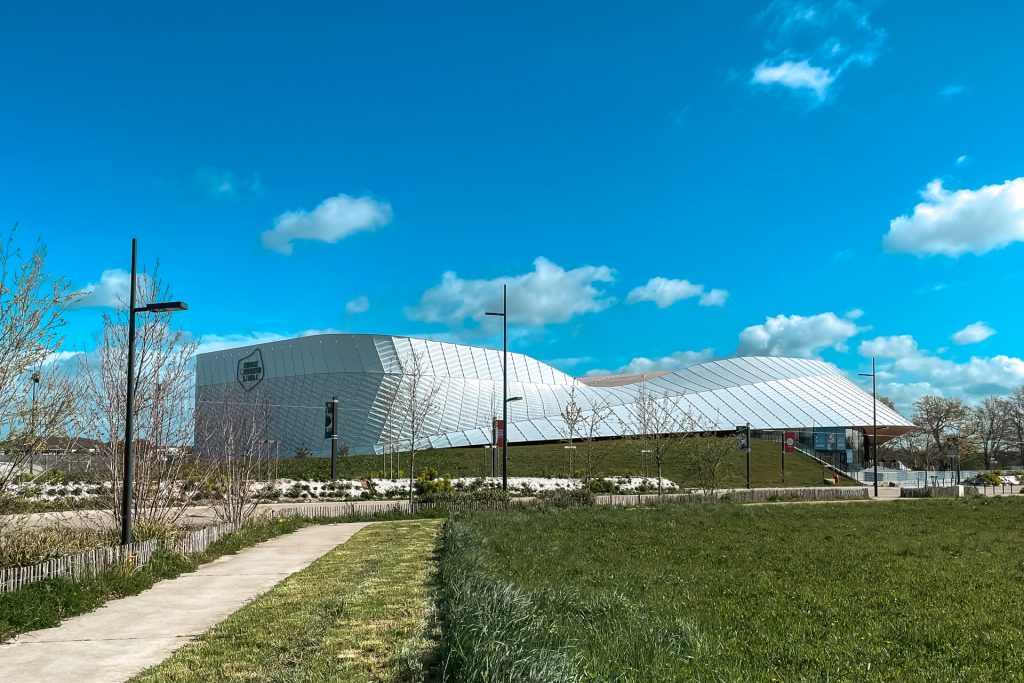
Finding Inspiration in the Arts
Now of course Recto VRso cannot go unmentioned in this blog post. Recto VRso is a component of Laval Virtual, which this year took place partially at Le Quarante, a cultural center in Laval and L’Espace Mayenne. It showcases innovative uses of XR in the field of art and culture. Attendees can interact with some of the installations that push the boundaries of what is possible in XR art, providing a platform for networking and inspiration in the field – further fueling my passion for the intersection of technology and creativity.
I’d like to single out one installation called Memory house by artist Jiahe Zhao.
According to the artists own words an my rough translation into English: Numerous items hold cherished memories, ranging from beloved family toys to treasured travel souvenirs. “Memory House” offers a solution for storing these memories in a virtual realm. By using 3D scanning technology, memory objects are brought into the virtual space, and through transformation by AI (artificial intelligence), they are manifested into a one-of-a-kind virtual edifice that is ideal for exploration.
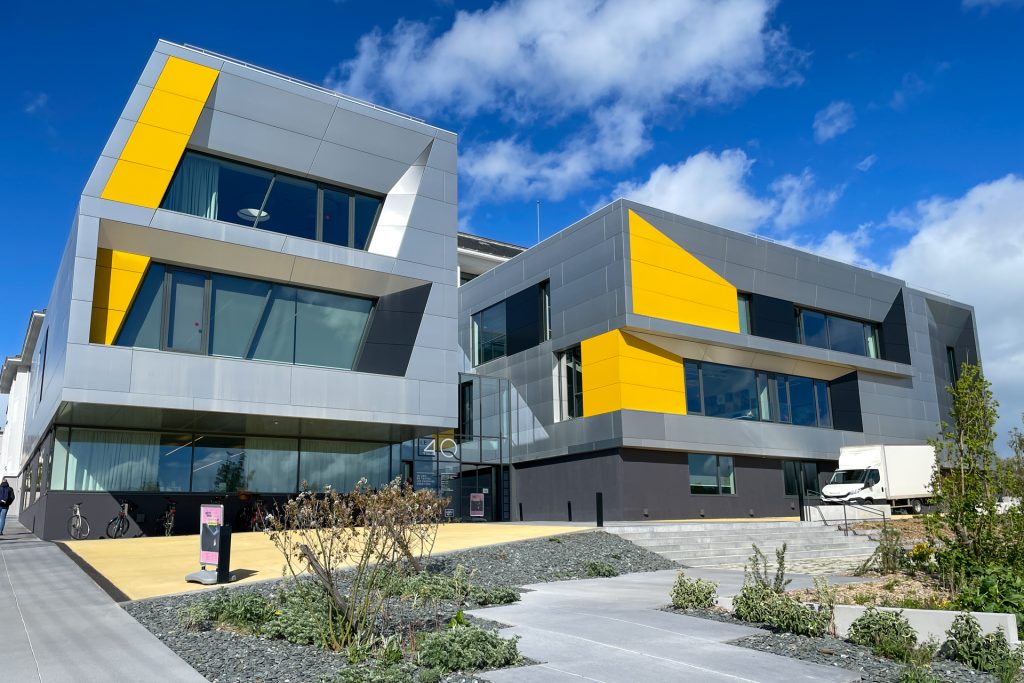
And yet Recto VRso seems to be an exception. Over and over have I noticed that XR related applications are heavily situated in the engineering, training/onboarding and skills learning sectors, very little is to be found in the liberal arts world, sadly. Having an academic background in field of liberal arts myself I was excited to discover the creative applications of XR technology at Laval Virtual. I found inspiration in BavARt, an AR-specialised firm that combines art and technology in a Pokémon Go-style app.
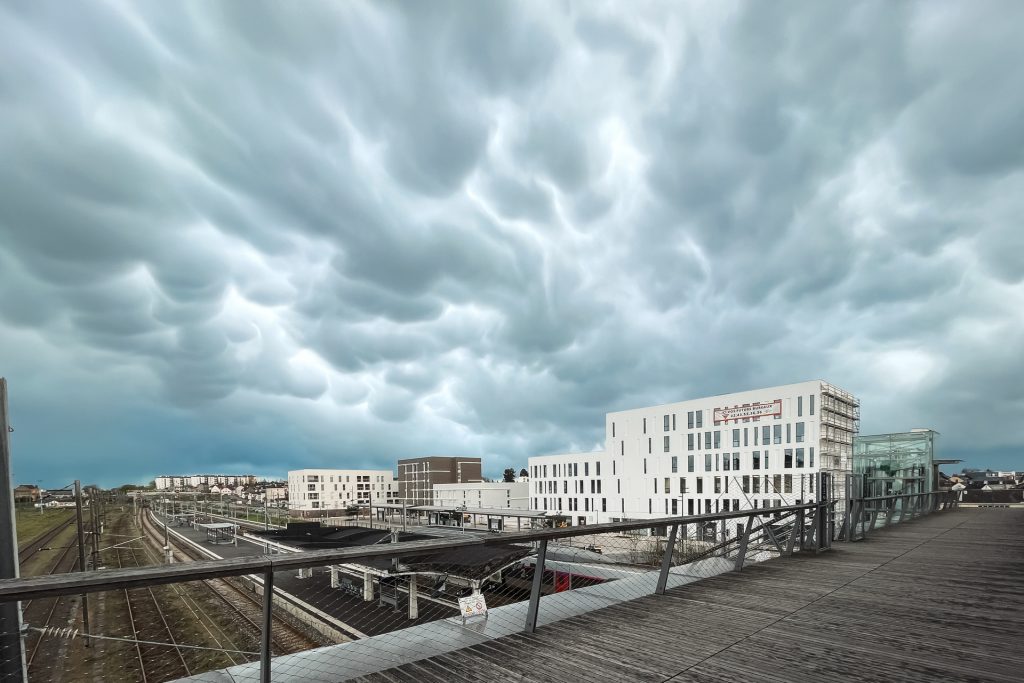
Immersion?
As I left LavalVR, I couldn’t help but reflect on my initial question of what defines immersive experiences in VR. Throughout my journey, I discovered that immersion is not just about cutting-edge technology and realistic visuals. It also involves connecting with our emotions, bridging the gap between the digital and physical worlds, and finding inspiration in the creative fusion of art and technology. The quest for immersion is a never-ending journey, one that continuously ignites my enthusiasm for discovering the boundless opportunities that await in the world of virtual reality.
Final thoughts
This was my first conference I attend on my own, I knew no one at Laval and because I am not really an extrovert, but an observer if you will, I struggle connecting with strangers. Most attendees were there in larger parties and would therefore communicate and entertain themselves among each other which makes it for outsiders as myself hard to mingle. I am not complaining just stating what I noticed.
Yet at the hotel I couldn’t help but be involved in socialising with the French during breakfast. As people were arriving to the breakfast they were greeting everybody and they were greeted by the ones already there. People would ask each where they’re from and what they’d do and so forth. There was active communication throughout breakfast. I loved it
And finally, note that the venues for the Laval Virtual are kilometers away from each other and not just quelques pas (a few steps) as was repeated by officials a few times =) Nonetheless I took this as an opportunity to walk and boy did I do some walking, a total of 27km on two and a hald days between my hotel and the three venues.
Thank you Laval Virtual et à la prochaine!
***
Background
I am fairly new to the XR world, in fact it was only last October (2022) that I had a VR headset on for the first time, imagine that! Having studied languages, folkloristics and other liberal arts subjects (at the University of Helsinki (UH)) I have noticed that I have a somewhat different approach to technology than most of my peers. I have been working in several positions at UH over the last, almost two decades including as an International exchange expert and Edtech specialist before joining the Global campus team. As a lifelong learner I started studying university pedagogy last year at UH believing it will give me a strong understanding of educational technology. Furthermore I am the chair of Una Europa’s Educational design and technology cluster. For more coherent info on me see the Us section.
